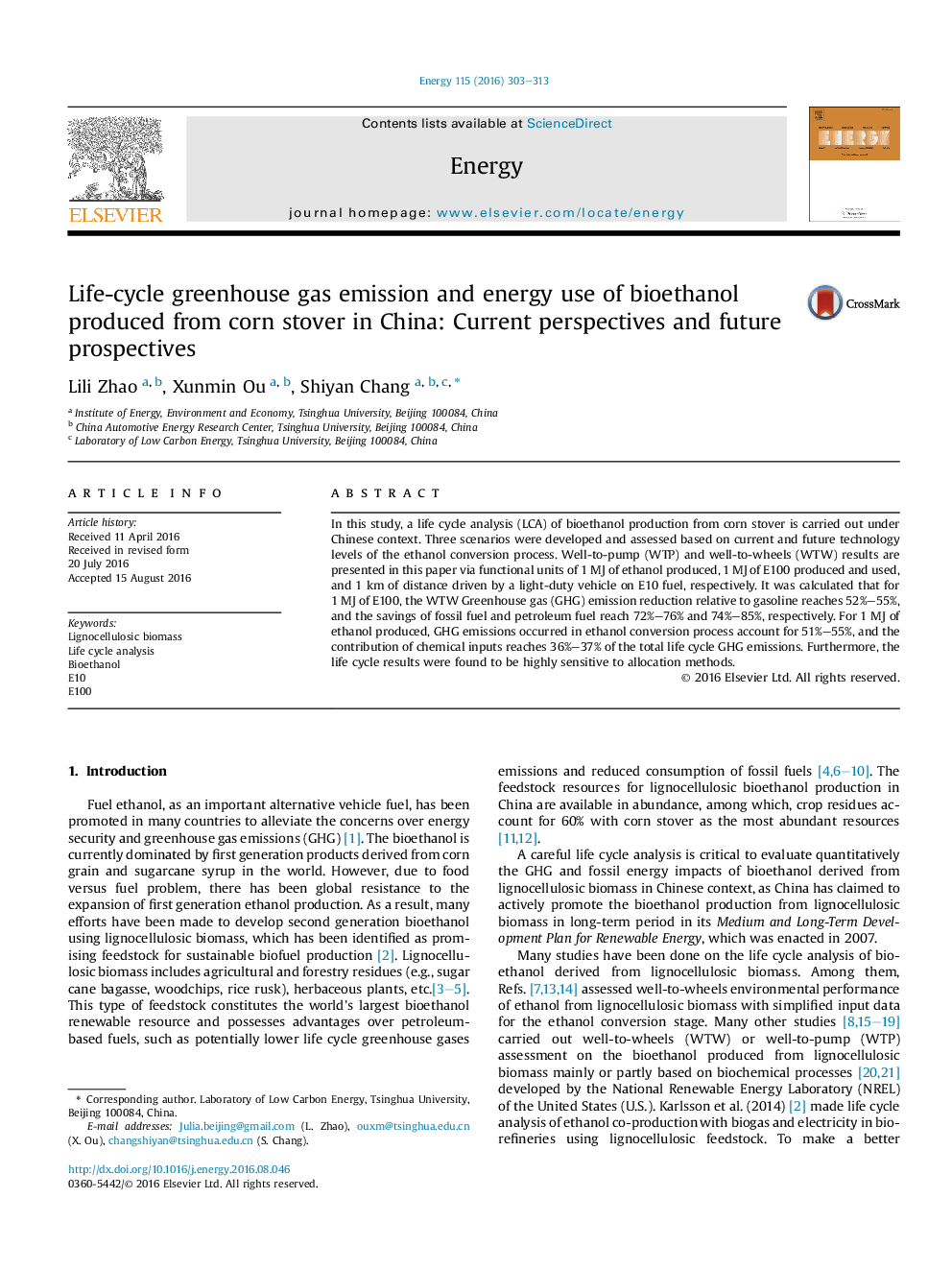| Article ID | Journal | Published Year | Pages | File Type |
|---|---|---|---|---|
| 5476674 | Energy | 2016 | 11 Pages |
Abstract
In this study, a life cycle analysis (LCA) of bioethanol production from corn stover is carried out under Chinese context. Three scenarios were developed and assessed based on current and future technology levels of the ethanol conversion process. Well-to-pump (WTP) and well-to-wheels (WTW) results are presented in this paper via functional units of 1Â MJ of ethanol produced, 1Â MJ of E100 produced and used, and 1Â km of distance driven by a light-duty vehicle on E10 fuel, respectively. It was calculated that for 1Â MJ of E100, the WTW Greenhouse gas (GHG) emission reduction relative to gasoline reaches 52%-55%, and the savings of fossil fuel and petroleum fuel reach 72%-76% and 74%-85%, respectively. For 1Â MJ of ethanol produced, GHG emissions occurred in ethanol conversion process account for 51%-55%, and the contribution of chemical inputs reaches 36%-37% of the total life cycle GHG emissions. Furthermore, the life cycle results were found to be highly sensitive to allocation methods.
Related Topics
Physical Sciences and Engineering
Energy
Energy (General)
Authors
Lili Zhao, Xunmin Ou, Shiyan Chang,
